- Home
- Michael Duffy
Call Me Cruel Page 5
Call Me Cruel Read online
Page 5
‘It is not in his nature,’ she said. ‘It’s very out of character. I’ll speak to him about it.’
Later, Sean received a call from Gary, who said, ‘What’s going on? What did Kylie tell you?’
Sean said, ‘You tell me what happened.’
‘I’ve just spoken to Mum, and nothing happened in the hotel room, nothing at all. I’ve always thought of you as a brother. I can’t believe you would think that I would do that to Kylie. I swear on my kid’s grave that I would never do that to her.’
‘Then why’s Kylie said all these things?’
‘I don’t know.’
Sean said she planned to tell the police but Gary didn’t seem concerned. ‘It will be good,’ he said. ‘That’ll clear my name. Then you can divorce her and we can get back to being friends.’
After Kylie went missing, Sean confirmed to police that she had told him about the alleged rape and a conversation such as that above did occur. He was still conflicted about what had happened, believing it highly unlikely that Gary would have done such a thing, but also believing that Kylie would not lie: the whole thing was a painful mystery.
According to Kylie’s notes, on the same day as her conversation with Sean about the alleged rape she also told ‘a guy called Paul Wilkinson’. She rang him at 9.00 p.m. and said, ‘There’s something I need to tell you.’
‘What’s wrong?’
‘You remember when Gary was in Sydney?’
‘Yes.’
‘He sexually assaulted me.’
Wilkinson asked for details and told her she needed to go to the police station and make a formal statement. The next day she went to Miranda and reported the rape to Sergeant Di Stricker, and the day after that she had a phone conversation with Donna O’Mally. On 9 March, according to her diary, ‘Went to Cronulla Police Station and made a statement about sexual assault. I found it very difficult and hard to re-live the past. I cried several times. Sgt. O’Mally took my statement. It went from 1400–1730 hrs. It was very traumatizing to go over the sexual assault.’
O’Mally was an experienced police officer, and certain aspects of Kylie’s interview troubled her. Kylie appeared to have trouble recalling the sequence of events, and kept jumping back and forwards during the statement. Despite mentioning Paul Wilkinson, she seemed very keen to keep him out of the investigation. She said their relationship was purely professional; she’d called him for advice because he was someone she knew who was with the police force. But there was an intensity when Wilkinson’s name was mentioned that made O’Mally wonder about this. O’Mally later recalled she ‘formed the opinion whilst speaking with Kylie that she was lonely and may have been susceptible to mental health issues. I formed this opinion based on my experience interviewing numerous sexual assault victims and experience as a police negotiator.’
Still, Kylie was sticking to her story. O’Mally told her about counselling services she might like to contact and then passed the investigation over to City Central Police Station, because the alleged assault had occurred in the city. That night Kylie didn’t sleep well. According to her diary, ‘The statement was on my mind. The night kept going through my mind. It was like a nightmare, flash backs. I was home alone and [that] made me a little more frightened.’ At this time Sean was often away, on the ship or working in Canberra. On 17 March Kylie had trouble sleeping once more, and the next day she wrote: ‘dyed my hair burgundy as tomorrow is a month since sexual assault couldn’t stand having blond hair any more as it reminded me of sexual assault.’ On 23 March she wrote: ‘Todd Holoson contacted me from City Central Police Station Darling Harbour re. case and progress. Todd to call me next week to make arrangements to come to station and discuss case.’ This was the last diary entry of any substance about the rape.
Donna O’Mally must have been surprised to receive a phone call from Paul Wilkinson on 7 May. He said he had something to tell her about the rape, and later that day came to see her. He said Kylie had admitted to him that she’d made up the whole thing. In fact, she had been having an affair with Gary and was now pregnant by him, and had said she might move interstate to be with him. Wilkinson said Kylie’s family had called him. (This was the day he received the phone calls from Michael and Leanne Edwards.)
O’Mally listened to this and thought there was something strange about Wilkinson’s manner. He was uptight and ‘appeared to be disjointed in his conversation and I was having trouble getting facts . . . from him’. She urged him to call Kylie’s relatives and ask them to report her missing, and to tell Gosford police the report number for the sexual assault, and also to tell them about the possibility Kylie was with Gary. Wilkinson did this. O’Mally asked about his own connection with Kylie. He said they had not had a sexual relationship, but from his manner she suspected this was false.
Once Craig had obtained and read all the documents relevant to the alleged rape, she contacted Gary and asked if Kylie was with him. He said she wasn’t. He hadn’t seen her since the time they met in Sydney. He denied the rape allegation and was distressed by it. He had an alibi for the time she’d disappeared.
Rebekkah Craig wondered about the rape story. Donna O’Mally was an experienced officer; if she thought Kylie might be lying, that had to be taken seriously. But what possible reason could there be for such an extraordinary fabrication? And where did Paul Wilkinson fit in? In particular, what was to be made of his claim to have heard from Kylie in recent days, about going to live with Gary?
By the end of the first week of the investigation, Craig was pretty sure that neither Sean nor Gary was involved in Kylie’s disappearance, which left one person of interest. She hoped to learn more when she interviewed Paul Wilkinson the following week.
When Craig arrived at work at 8.00 a.m. on Monday 17 May, there was a note on her desk asking her to contact Detective Mark Polley at Bankstown detectives. She called and heard yet another weird tale: there had been a fire at Paul Wilkinson’s house in Picnic Point in Sydney’s south. Wilkinson was claiming that one of those who’d set it was Kylie Labouchardiere, and that she’d tied him up and left him there, presumably in the hope he would burn to death. Fortunately, the fire had done only modest damage to the house, and Wilkinson had not been injured. Given the apparent seriousness of the incident, Bankstown police had driven up to Louisa Windeyer’s flat to see if they could find Kylie. They’d learned of her disappearance and now wanted to talk with Craig to see if she’d found anything that might help them.
The case was becoming complicated, so Craig’s senior officer, Detective Sergeant Peter Houlahan, decided he would accompany her to Bankstown to talk to the detectives there. He was to be the officer in charge of the investigation for the next year. The detectives drove to Sydney—the first of many long trips the investigation would require—where Mark Polley showed them the statement Wilkinson had provided after the fire.
Wilkinson was twenty-eight years old and lived in a rented house in Kelvin Parade with his wife, Julie Thurecht, and their six-month-old son, Bradley. It was a simple two-bedroom place, fibro with a tile roof, and a driveway running up the side. Late on Saturday afternoon, he’d left Julie and the child at her parents’ home at nearby Illawong, just across the Georges River, and was driving to see his own parents at the Engadine RSL when his mobile rang. When he answered, all he heard was heavy breathing, and he hung up after about ten seconds. He then drove home because ‘for the last couple of nights there had been an increase in vehicles travelling up and down the street’, which was normally a very quiet one.
Wilkinson said that when he arrived he went into the lounge room, where he was confronted by Kylie, whom he knew as an acquaintance. He said they’d first met a few months earlier and that she’d told him she’d been raped. After urging her to report it to police, he had ‘kept in contact with Kylie regarding the sexual assault and progress of the case. During this time Kylie started becoming po
ssessive and would call me up to eight times a day. I didn’t speak with Kylie all the time but did some of the time. Along with the phone calls Kylie would send me SMS messages. The messages saying that I was hers and that she wasn’t getting on with her husband and wanted to be with me.’ He said that after a while he had came to doubt the truth of the rape allegation, because Kylie would change the details every time she talked about it. Eventually, he had told her she was ‘full of shit’ and suggested she return to the police and admit she’d made a false statement.
‘It wasn’t long after this,’ he said, ‘that I heard Kylie was in fact having an affair with [Gary, who] was supposed to have sexually assaulted her.’ Asked why Kylie might have made up the rape claim, he said, ‘It’s the easiest way to get a divorce, ’cause it would have put a rift through the family . . . her husband’s side of the family [because they were close to Gary]’. According to Wilkinson, Kylie had continued to pester him, even coming to visit him at Marrickville Police Station, where he was then working, and where she stole some police property: a digital hand-held video recorder, a mobile phone and a number of portable two-way radios. The Marrickville crime manager spoke to Wilkinson about these thefts, and he had a word with Kylie and she returned the items.
After this she started sending him text messages of a sexual nature, even though he didn’t want to have a sexual relationship with her. When he told her this, ‘The messages and phone calls soon turned nasty, and I started to receive death threats in my mail,’ he told police, ‘along with messages from Kylie such as I was going to get my car blown up and that my wife and kid would be killed.’
Like many fantasists, Wilkinson sometimes included bits and pieces of the truth in his fabrications. In the above account, the story of Kylie visiting him at work might have been true: it recalls the visits she used to make to Sean’s naval base. Wilkinson said he continued to receive threatening messages from Kylie until about 25 April (just a few days before she disappeared), when she told him she was going interstate to be with Gary. Wilkinson told her they first had to tell the police the rape allegation was false, and she agreed to come to Sutherland Railway Station on the night of 28 April. (He did not say why he had to be involved in this.) He said he’d driven there but she hadn’t turned up, and he’d had no communication with her since that day, until he found her in his house on 16 May, along with a tall, thin Aboriginal man who looked about thirty years old and sported a moustache and a number-two haircut. Kylie was wearing a white short-sleeve shirt and blue track pants, and the man had a black jumper and black pants. Wilkinson had never seen him before. ‘As soon as I saw both Kylie and the male standing in front of me,’ Wilkinson told police, ‘I thought they were there to hurt me in some way. I don’t know how they got into the house as I [had] shut the front door behind me when I entered, they must have been there when I walked in. I have immediately struck out and punched Kylie in the mouth. At the same time of doing this the male with Kylie had punched me once above the right eye causing me to stumble backwards before falling over and landing on the floor. The man has yelled, “Black cunt. Is this the cunt?”
‘Kylie said, “That’s the fucking asshole.” When I landed on the floor both Kylie and the male jumped on top of me. I have felt my hands being grabbed and they were bound with something in front of my body . . . it was also around my neck at the same time because I was restricted in movement, I couldn’t move my hands very far. I was trying to pull my hands down and it was pulling my head down with me . . . The male then said to me, “What’s this fucking stuff?” I didn’t answer him as I didn’t know what the fuck he was talking about. The male has then said [to Kylie], “Where did Mick say the evidence was?” ’
This was a reference to Mick Hollingsworth, the Redfern police officer who had been driving the car when TJ Hickey died four months earlier, and who was blamed for the death by many Aboriginal people. The ‘evidence’ was Wilkinson’s work notebook, in which he had recorded details of Kylie’s changing stories about her alleged rape, an account of the theft of items from Marrickville Police Station, and a record of death threats he said he’d been receiving. Then, his account continued, Kylie said, ‘Mick said [the notebook was] in the house.’
Wilkinson responded, ‘I ain’t got it, I’ve handed it in.’ He said the man placed something like a jumper over his face, and he just lay there, too scared to move. He heard things being moved about the house and then the noise of the back door banging shut. There was the smell of smoke so he rolled over and managed to get to his feet, when the jumper fell off his face and he could see. He ran through the house, finding much of it alight and filled with smoke. He went into the main bedroom and closed the door to keep the smoke out, and then kicked the window out and yelled for help. No one came, so he clambered through the hole and ran to his neighbour’s and knocked. When no one answered, he ran up the street knocking on doors until one opened. ‘Ring the coppers and ring the firies,’ he gasped. ‘The house is on fire.’ As a result of the incident, he said, ‘I have a burning throat, it hurts slightly when I breathe, I have a shocking fucking headache and a lump above my right eye. I have sore wrists and my neck is a bit sore.’
After Houlahan and Craig read Wilkinson’s statement, they asked Mark Polley what he thought. He was suspicious about the fire: the house doors were barricaded from the inside, which didn’t fit Wilkinson’s story; and there were the mystifying movements of Burt, a yellow Cockatiel pet that Wilkinson said had been in its cage in the kitchen when he entered the house. Yet the police had found it on the veranda, uninjured.
Craig agreed the fire was suspicious, and wondered why Wilkinson might have set it. One possibility was that he had killed Kylie in the house and was trying to destroy forensic evidence there. But the modest nature of the fire, which actually hadn’t done a huge amount of damage, didn’t strongly support that. She thought it more likely that, if he had killed her, the purpose of the fire was to throw the investigation off course by suggesting Kylie was still alive. If this was really what was going on, it was a distinctly curious way to do it, by turning himself into Kylie’s victim.
Another interesting aspect of the story (which, as police suspected, was a complete fabrication—Wilkinson had set the fire himself) was the inclusion of a twisted version of the TJ Hickey case. This was the first of many times Wilkinson was to incorporate real events into his fantasies.
Once the Bankstown detectives had briefed Houlahan and Craig, they said they wanted to take over the investigation into Kylie’s disappearance. This made a lot of sense because the focus was definitely in Sydney: Kylie had last been heard from at Central Station, the only person of interest was Paul Wilkinson of Picnic Point, and the fire there was probably linked to her disappearance. It was all a long way from the Coast. But the crime manager back at Gosford refused to give up the investigation, which is how it came to be run from such a distance over the next five years. Once this was resolved, Houlahan and Craig arranged to interview Wilkinson the next day.
While driving back to Gosford, Craig rang the Homicide Squad, which is based at Parramatta. Homicide does not handle all murders in New South Wales, but its specialist detectives are available to advise local detectives working murder investigations. This advice can cover everything from techniques of collecting evidence to how to go about obtaining the necessary resources. Craig said they needed advice—it was clear by now this would not be a straight-forward case—and was put on to Detective Inspector Andrew Waterman. Then in his forties, Waterman was one of the most experienced homicide investigators in the state. His successes included the arrests of serial killers such as Ivan Milat and John Glover, the so-called ‘granny killer’. He lived on the Coast and was known and respected by many of the officers there, so Craig was pleased to learn his team was on call that day. She and Waterman had the first of what were to be many conversations about Paul Wilkinson.
One thing they discussed was how she and Hou
lahan should approach Wilkinson the next day. The problem was that although his behaviour on many counts was highly suspicious, they did not have one piece of firm evidence linking him to Kylie’s disappearance. Because of this uncertainty, they would need to proceed with caution. Once Wilkinson realised he was a suspect, he would probably ‘lawyer up’ and be advised not to speak to the police anymore. It was decided, in order to minimise the chance of rattling him, to keep their approach fairly relaxed.
Craig’s first interview with Paul Wilkinson took place on 18 May at Bankstown Police Station. He was pretty much as she remembered him: a good-looking, dark-skinned man of average build, although he’d put on some weight. In manner he was confident and talkative. Houlahan and Craig began the conversation by asking about his recent relationship with Kylie; they learned that, following previous encounters at Redfern and Miranda, Wilkinson and Kylie had met again when she’d been working as a nurse’s aide at Sutherland Hospital. In December 2003 he’d gone into the hospital for a few days of tests.
While he was there, he said, ‘I wasn’t really allowed to smoke but I did, and I remember one time it was about half past three in the morning . . . I snuck out for a smoke . . . she came out to the smoking area and she put it on me there.’
‘What did she say or do?’ said Craig.
‘She said, “We’re alone,” she put her hand on my genitals. I pulled away and I just got up and went to my ward.’
They’d kept in contact after Wilkinson left hospital, he said, partly because Kylie was interested in joining the police force, and partly because she wanted to have sex with him.
Wilkinson’s behaviour during the interview was peculiar. Sometimes he’d try to dominate by asking his own questions. At several points he was even aggressive, saying things like, ‘What are you asking that shit for?’ and ‘What are you, stupid?’ He seemed particularly hostile towards Craig, which was odd because at Redfern they’d got on well enough, and Wilkinson had had a good relationship with her husband, who is also part-Aboriginal. Craig asked Wilkinson if Kylie had ever been in his car. He said she’d got in one time and refused to get out unless he ‘engaged in some sort of sexual thing with her and I refused and refused and refused and it was at that point that she said to me she was going home to ask her husband for a threesome, her, her husband and myself. It frightened the shit out of me in the end.’

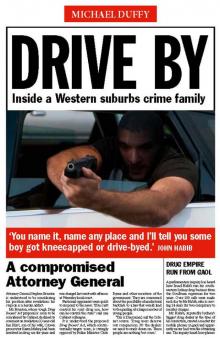 Drive By
Drive By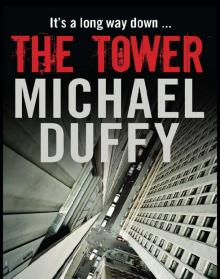 The Tower
The Tower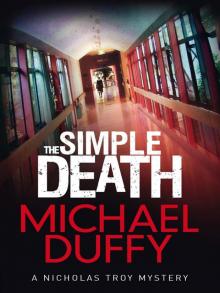 The Simple Death
The Simple Death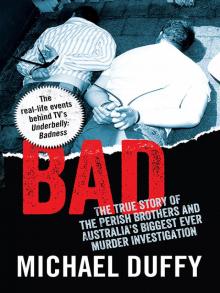 Bad
Bad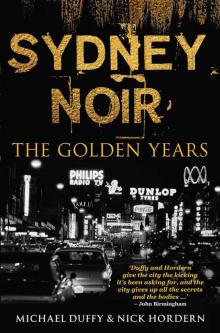 Sydney Noir
Sydney Noir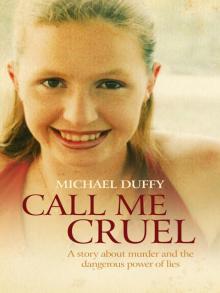 Call Me Cruel
Call Me Cruel